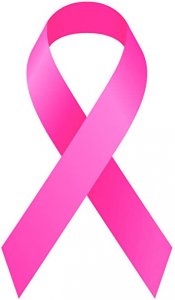Another treatment is called complete decongestive therapy (CDT). Studies have found significant improvement in arm function, swelling, and ADL performance of patients being treated with CDT, thus increasing their quality of life. CDT involves skin care, manual lymphatic drainage, bandages and compression, patient education, and exercise to increased range of motion in affected upper extremity. Patients in phase one of lymphedema have the most improvement, noting that getting treatment early is key in managing breast cancer related lymphedema. You may have this done my a certified lymphedema specialist.
Myth #2: There is no quality of life as breast cancer related lymphedema is unmanageable.
Women with breast cancer related lymphedema can manage symptoms and take control of their lives. This video shows Annie Race who has been suffering from breast cancer-related lymphedema since the 90´s. She has been dealing with lymphedema for 23 years and she, as as well as doctors, give advice on how to manage lymphedema, such as compression garments and therapy throughout the week. She started to manage her symptoms early on which helped her increase her decrease her symptoms increasing her quality of life.
Myth #3: Breast cancer related lymphedema would not improve with compression garments.
Before and after compression garments:

With many myths and misinformation about breast cancer related lymphedema, it is important to do research and learn about the benefits of treatments and that it is possible to live with and manage lymphedema. This knowledge will allow you live your best quality of life with the least amount of symptoms.

Ezzo, J., Manheimer, E., McNeely, M. L., Howell, D. M., Weiss, R., Johansson, K. I., Bao, T., Bily, L., Tuppo, C. M., Williams, A. F., Karadibak, D., & Ezzo, J. (n.d.). Manual lymphatic drainage for lymphedema following breast cancer treatment. Cochrane Database of Systematic Reviews, 5.
Kostanoglu, A., & Tarakcı, E. (2021). Physical therapy enhances functions and quality of life in older patients with breast cancer-related lymphedema: A prospective experimental study. Nigerian Journal of Clinical Practice, 24(3) 387–392.
Sun, Y., & Armer, J. M. (2019). A nurse’s twenty-four-year journey with breast cancer-related lymphedema. Work, 63(1), 21–31. https://doi.org/10.3233/WOR-192904

Hello! I found your post to be very educational and reading over the myths were interesting. I found it fascinating how compression bandaging in women with mild-to-moderate lymphedema symptoms was found to not only be safe but assisted significantly with reduction in swelling. I also thought your format, visual design, and organization was very eye appealing.
Hi Stephanie!
I enjoyed your blog post as it provided great information and I learned a lot about the diagnosis and clearly explained the debunked myths about lymphedema. I enjoyed your design layout and felt that the information was accessible and concise. I especially enjoyed the videos as they were good resources for education.